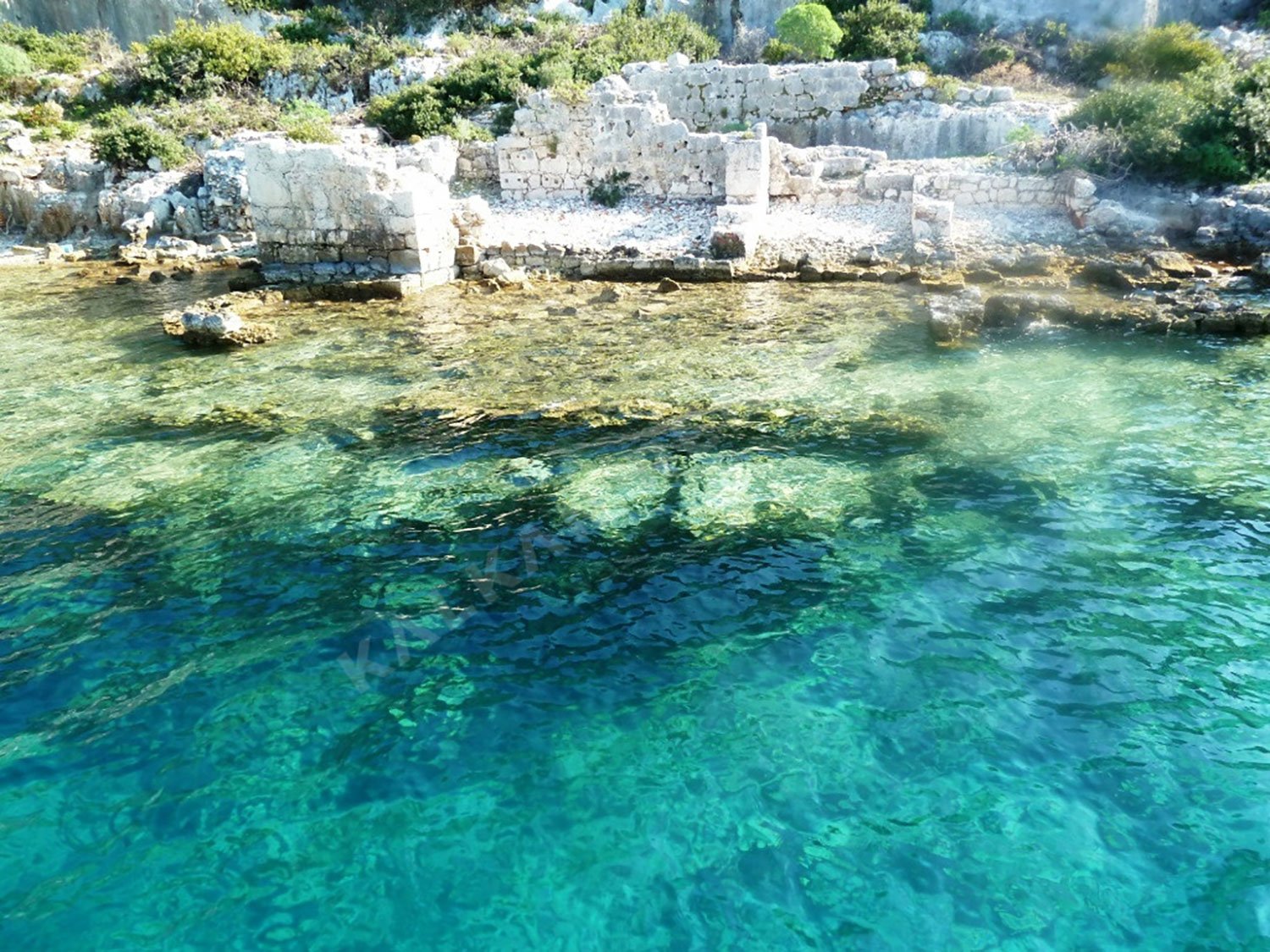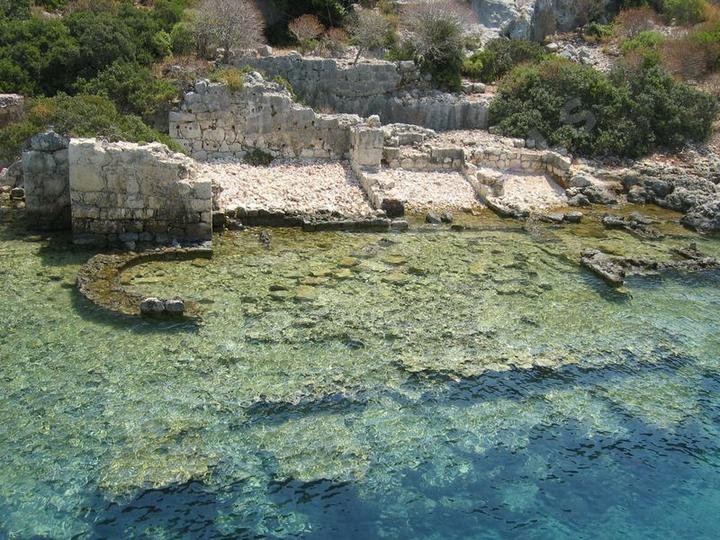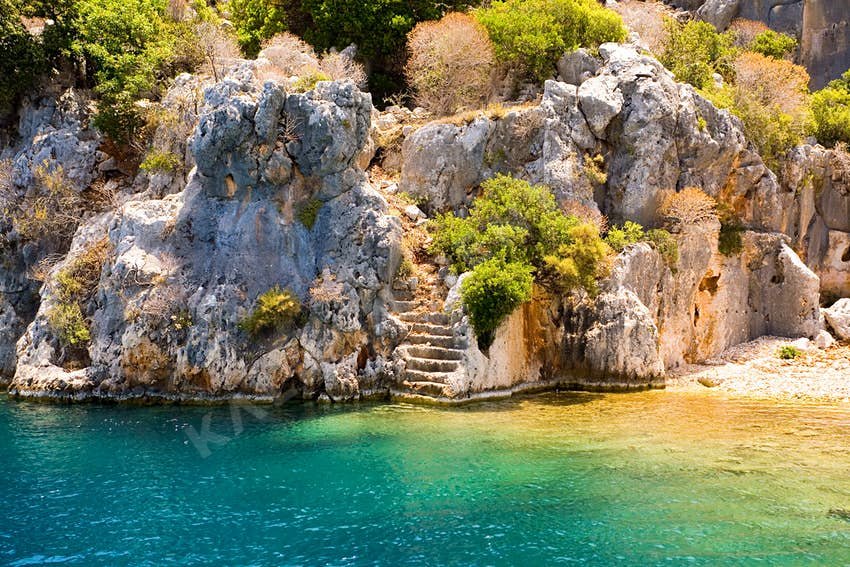The island of Kekova is a very popular Lycian site 4.5 square kilometres and is uninhabited. It has many visitors from nearby Kalkan who visit on a regular basis as it is situated close-by in one of the most attractive areas of the Turkish Mediterranean coastline.
The name ‘Kekova’ is simply translated as, plane of thyme, and describes the area of which the ancient Lycian sunken city of Simena is situated. A subtle mix of ancient, medieval and modern history makes Kekova-Simena very interesting as well as a beauty spot. In historical times Simena was a small fishing village, later to become a Crusaders’ station of the Knights of St. John. After the Italian occupation of Kastelorizo, Kekova — which at that time was temporarily inhabited during summer because of wood harvest — was disputed between Italy and Turkey. The 1932 Convention between Italy and Turkey assigned it to Turkey. Today however the surrounding area has returned to being the quiet fishing village of Kalekoy or Kale as it is known locally. The Kekova region was declared a specially protected area on 18 January 1990 by Turkish Ministry of Environment and Forest. All kinds of diving and swimming were prohibited and subject to special permits from governmental offices. In later years the prohibition has been lifted except for the part where the sunken city is.
The ancient city of Kekova (Simena) is split between an island, and the coastal part of the mainland. On the mainland, the quiet village of Kale still seen today has a mixture of ancient and medieval structures and can only be accessed from the sea. At the top end of the village is a well-preserved crusaders’ castle built partially upon ancient Lycian foundations. Inside the castle is the smallest amphitheatre of Lycia. At the eastern end of the village is a group of sarcophagi overlooking the sea and surrounded by ancient olive trees. Across the bay, alongside the island are the half-submerged ruins of the ancient dwellings of Kekova. The submergence is due to the downward shift of land following the second century earthquakes. Today these can be viewed by glass bottom boat trips which can be pre-booked via Kalkan Collection.







